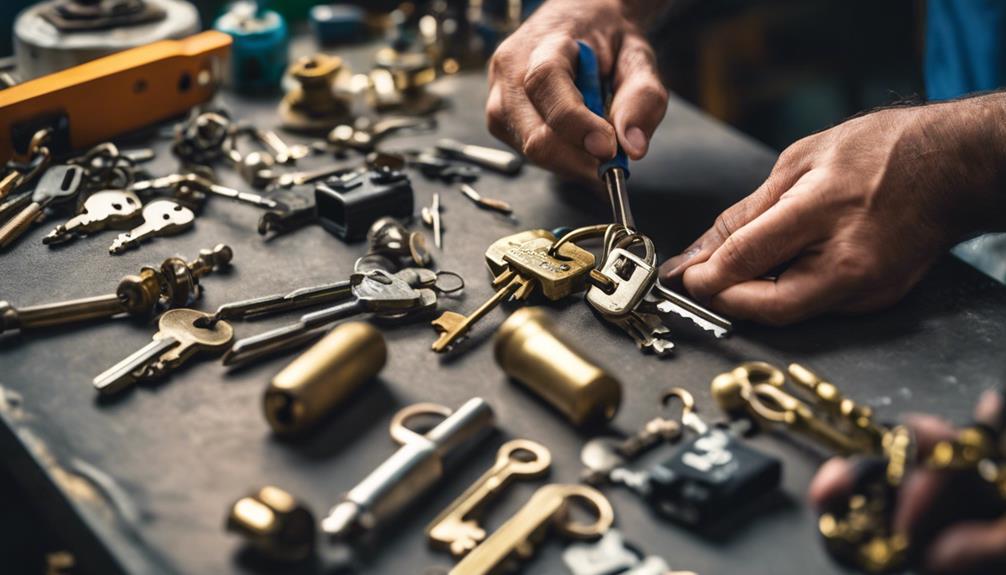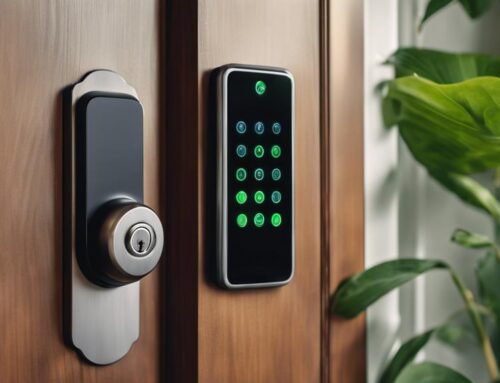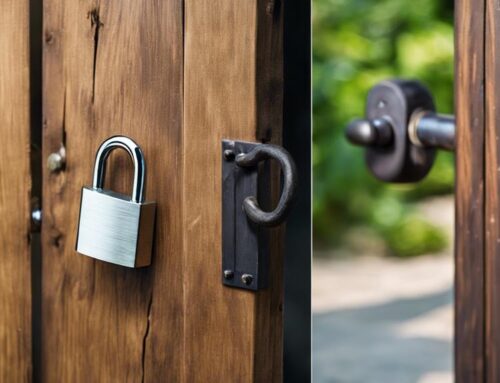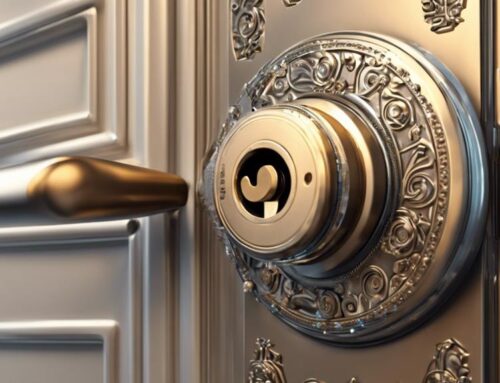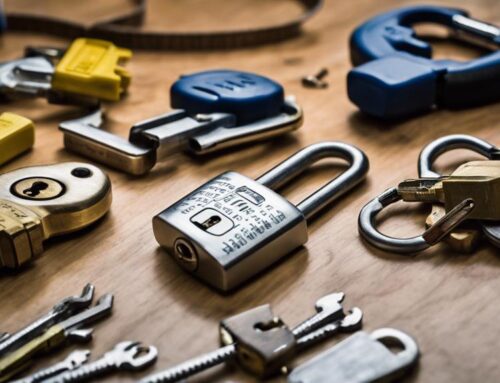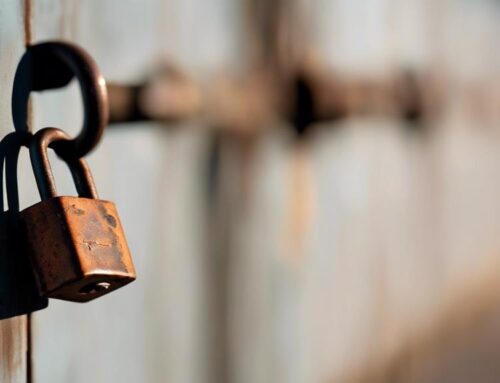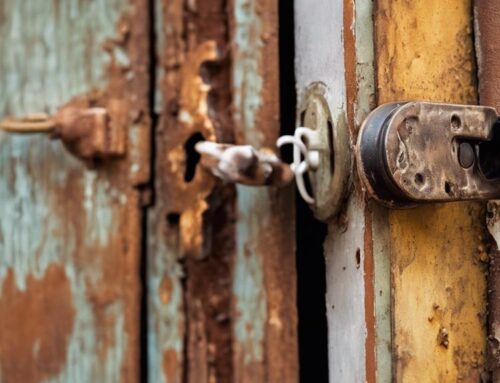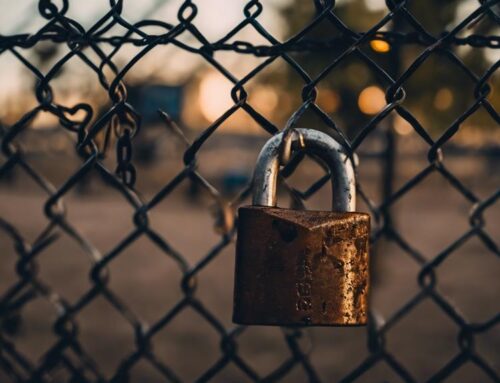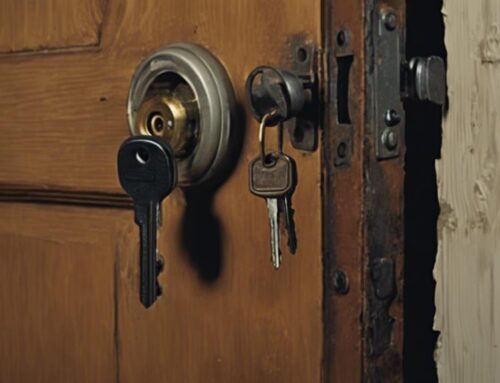When you choose professional lock re-keying, you can expect a simple yet effective process. A skilled locksmith will assess your lock's condition and check key compatibility. They'll disassemble the lock carefully, replace the pins to match your new key, and reassemble it with precision. After that, your locksmith will test the new key to guarantee it operates smoothly. This service not only enhances your security but also saves you the cost of new locks. If you're curious about the tools and techniques used, there's plenty more to discover about the process.
Key Takeaways
- Lock re-keying enhances security by changing the internal mechanism to work with a new key, rendering old keys useless.
- Skilled locksmiths ensure precision during re-keying, reducing the risk of mistakes and ensuring smooth lock functionality.
- The initial assessment process evaluates lock condition, key compatibility, and security needs to determine the best re-keying approach.
- Disassembly requires specific tools and a step-by-step process to avoid damage and ensure careful handling of all components.
- Testing the new key after re-keying confirms functionality, ensuring it operates smoothly without any resistance or sticking issues.
Understanding Lock Re-keying
Re-keying a lock is a smart choice when you want to enhance your security without the expense of replacing the entire locking system. It involves changing the internal mechanism of your lock so that it works with a new key, effectively rendering any old keys useless. This process not only helps to maintain your security but also can be completed in a fraction of the time it takes to install a new lock the advantages of re-keying.
This can be an essential step if you've lost your keys or if you've recently moved into a new home.
When considering professional lock rekeying, you'll discover several benefits of hiring a locksmith. A skilled locksmith brings expertise and precision, guaranteeing the job is done correctly the first time. Their knowledge can save you from potential mistakes that could compromise your security.
While some may consider DIY rekeying, it often lacks the finesse and reliability that a professional provides.
In the end, investing in a locksmith not only assures your peace of mind but also guarantees that your lock functions smoothly. By choosing professional over DIY rekeying, you're making a commitment to your safety and the well-being of those you serve.
Trusting a locksmith to handle this task means you can focus on what truly matters: creating a secure environment for yourself and others.
Tools Required for Re-keying
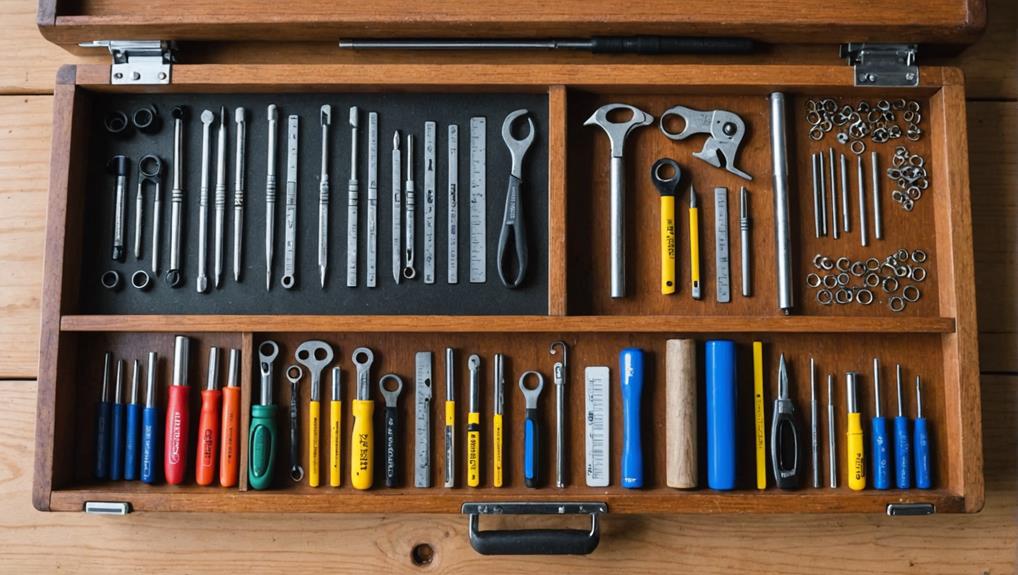
When tackling lock re-keying, having the right tools on hand is essential for a successful outcome. You'll want to guarantee you're equipped to serve your clients effectively, providing them peace of mind. Here's a handy table illustrating the tools you'll need:
| Tool | Purpose | Emotional Impact |
|---|---|---|
| Key Gauge | Measures key cuts | Guarantees security |
| Plug Spinner | Rotates the plug for easier access | Simplifies the process |
| Tweezers | Handles small parts | Eliminates frustration |
| Pinning Kit | Contains replacement pins | Restores trust in security |
| Screwdrivers | Removes lock components | Empowers your service |
Understanding what to expect from professional rekeying involves knowing these tools, as they directly impact the cost of professional rekeying. When you're prepared with the right equipment, you not only streamline the process but also enhance the overall customer experience. Investing in quality tools can lead to greater efficiency and satisfaction, reinforcing trust in your services. Remember, preparation is key to delivering exceptional service!
Initial Assessment Process
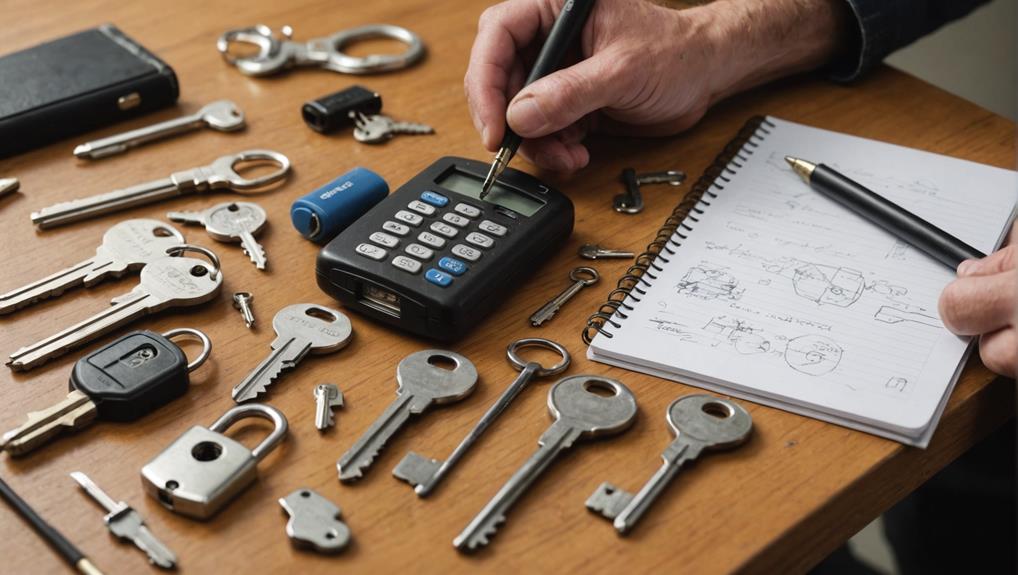
When you start the re-keying process, the initial assessment is vital.
You'll need to evaluate the lock's condition, check if the new keys are compatible, and analyze your specific security needs. This step guarantees that the re-keying will be effective and meet your requirements.
Understanding how the re-keying process impacts lock mechanics is essential for determining how well the new configuration will function, especially concerning the internal pins and tumblers.
Lock Condition Evaluation
Evaluating a lock's condition is essential for guaranteeing its functionality and security.
When you assess a lock, you're not just checking its appearance; you're guaranteeing that it serves its purpose effectively.
To help you with this process, consider the following factors:
- Physical Damage: Look for any signs of wear, cracks, or dents that might compromise the lock's integrity.
- Rust and Corrosion: Examine for any rust or corrosion, particularly in outdoor locks, which can hinder performance.
- Smooth Operation: Test how easily the lock opens and closes. Any resistance might indicate underlying issues.
- Key Insertion: Check if the key fits snugly and turns smoothly. Difficulty in inserting or turning could signal problems.
- Lock Alignment: Guarantee the lock aligns properly with the strike plate. Misalignment can lead to security vulnerabilities.
Key Compatibility Check
Before re-keying a lock, conducting a key compatibility check is vital to confirm the new key will function seamlessly. This step guarantees that the new key can operate the lock efficiently, preventing any future frustrations.
You'll want to start by inspecting the existing key and lock mechanism. Check for any wear or damage that might affect key performance.
Next, consult with your locksmith about the specifics of the lock type. Not all locks use the same key design, and a slight variation can lead to compatibility issues. If you're working with multiple locks, it's vital to verify that the new key aligns with all of them, especially if they need to share the same key.
Additionally, be prepared to provide details about the lock's brand and model. This information helps the locksmith determine the right key specifications.
By prioritizing this key compatibility check, you're not only confirming a smooth re-keying process but also enhancing the overall security of the property you're serving.
Security Needs Analysis
Understanding your security needs is essential for ensuring the safety of your property. The initial assessment process involves a thorough evaluation of your current security measures, helping you identify vulnerabilities and areas for improvement. By taking this step, you're not just protecting your assets; you're also ensuring peace of mind for yourself and those you serve.
During the security needs analysis, consider these key factors:
- Property layout: Understand the design and access points of your property.
- Crime statistics: Research local crime rates to gauge potential threats.
- Current security measures: Evaluate what you already have in place.
- Lifestyle factors: Consider how your daily activities might impact security.
- Future needs: Anticipate any changes in your property or personal circumstances that may require enhanced security.
Once you've assessed these factors, you can make informed decisions about lock re-keying and other security upgrades.
This proactive approach not only enhances safety for you but also creates a more secure environment for everyone who relies on your protection.
Disassembling the Lock
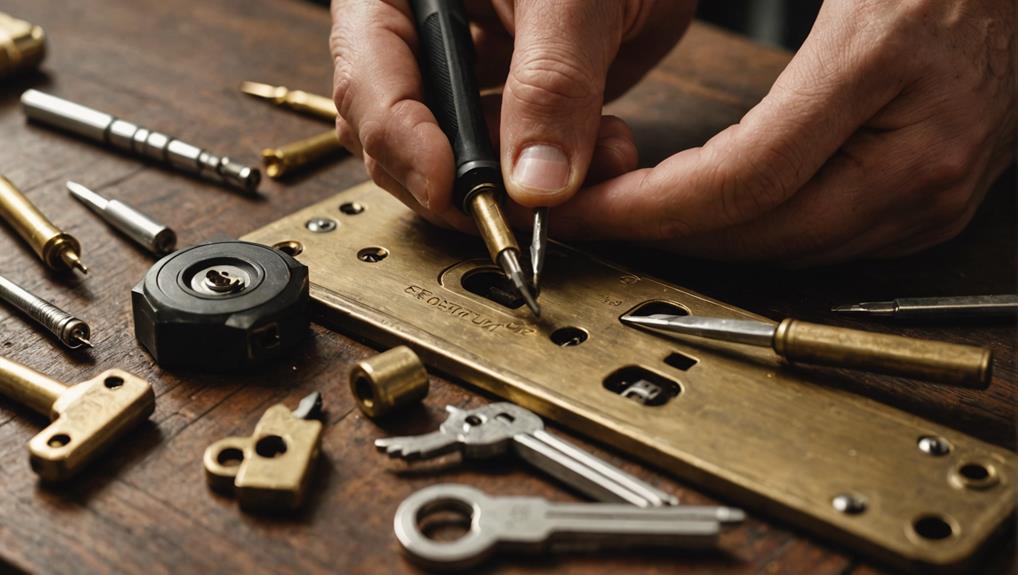
To successfully disassemble a lock, you'll need specific tools to make the process smooth.
Essential tools for DIY and professional re-keying include a screwdriver set, tweezers, and a re-keying kit.
In this section, we'll walk through the step-by-step process to guarantee you can take apart the lock without damaging it.
Let's get started!
Tools Required for Disassembly
When you're ready to disassemble a lock for re-keying, having the right tools on hand is essential for a smooth process. Confirming you're equipped with the necessary items not only makes your job easier but also helps you serve your clients better by delivering efficient results.
Here's a list of tools you'll need:
- Screwdriver set: A variety of flathead and Phillips screwdrivers to handle different types of screws.
- Tweezer or pick tool: Useful for maneuvering small parts, especially when dealing with pins and springs.
- Pliers: Needle-nose pliers can help grip and manipulate components without causing damage.
- Torque wrench: This allows you to tighten screws to the correct specification, confirming everything stays secure.
- Magnetic tray: A great way to organize and keep track of small parts, preventing any loss during disassembly.
With these tools in your arsenal, you'll be well-prepared to disassemble a lock efficiently.
This not only helps you in your task but also confirms your clients feel confident in your skills, knowing you have what it takes to get the job done right.
Step-by-Step Process
Disassembling a lock for re-keying involves a clear, step-by-step approach to assure you don't miss any essential components. First, make certain you have the right tools ready, including a screwdriver, tweezers, and a re-keying kit.
Begin by removing the lock from the door or mounting plate, which usually involves unscrewing a couple of screws.
Next, carefully take off the lock's cover. Once exposed, you'll see the cylinder and the pins inside. Use your tweezers to gently pull out the cylinder, being cautious not to lose any of the small pins or springs.
It's helpful to keep track of the pin sizes and their arrangement as you go, so note their positions.
Now, remove the existing pins and replace them with the new ones from your re-keying kit. Make sure the new pins are the right sizes to match your new key.
After replacing the pins, reinsert the cylinder into the lock housing and replace the cover.
Replacing the Pins
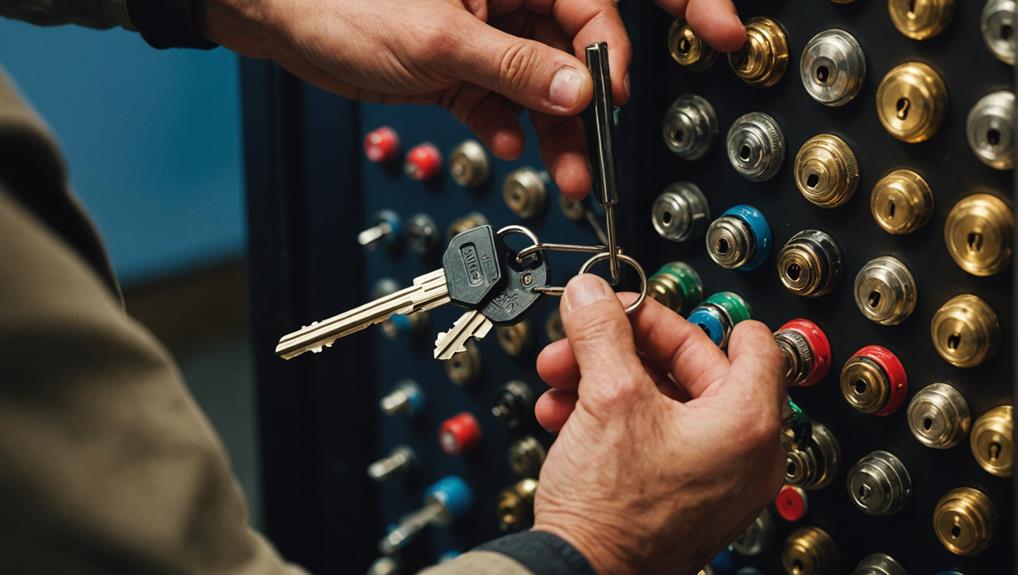
Replacing the pins in a lock cylinder is an essential step in the re-keying process. This is where you guarantee that the new key will operate the lock smoothly. Proper pin alignment is critical, as any errors can lead to malfunctioning locks or security vulnerabilities.
You'll start by disassembling the lock, carefully removing the cylinder to expose the pins inside. Each pin corresponds to a specific height, and you'll need to replace them with new ones that match your new key's cuts. For assistance with common challenges, refer to tips and troubleshooting.
Here are some key points to keep in mind during this process:
- Choose the Right Pins: Make sure the new pins match the cuts on your new key.
- Organize Your Workspace: Keep all pins and components organized to avoid confusion.
- Use Proper Tools: Utilize a pinning kit for accuracy and efficiency.
- Take Your Time: Rushing can lead to mistakes that may compromise security.
- Double-Check Everything: Before reassembling, confirm that all pins are correctly installed.
Testing the New Key
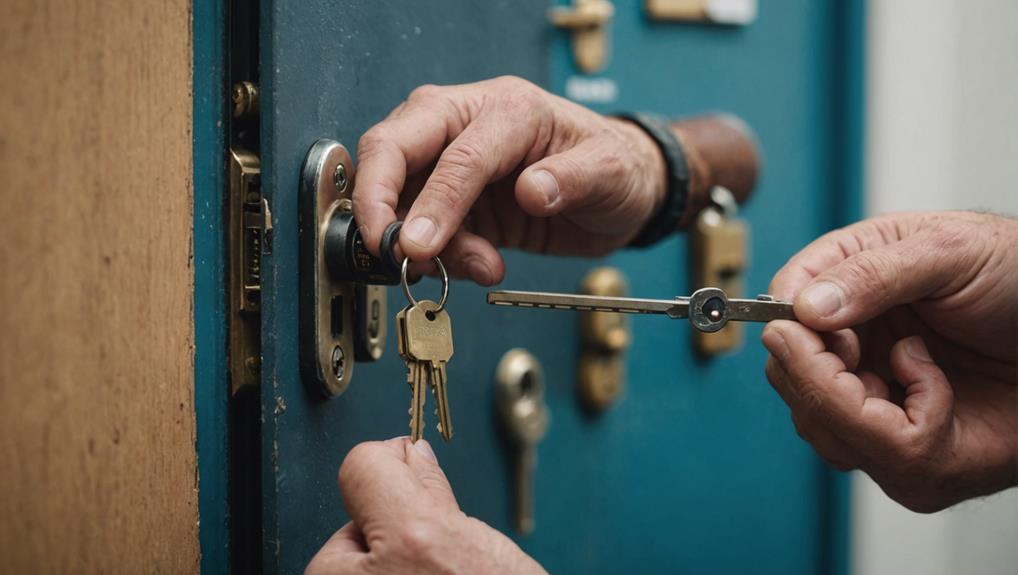
Verifying functionality is essential after re-keying a lock, and testing the new key is the final step in this process. Once you've completed the re-keying, take a moment to insert the new key into the lock. Turn it gently but firmly to see if it engages smoothly. A well-functioning key should turn without resistance, and the lock should open easily.
It's also important to take into account that re-keying can be a more cost-effective solution compared to full lock replacement, allowing you to maintain security without the expense of new hardware.
Next, test the key multiple times to confirm consistency. If you experience any issues, such as sticking or jamming, it may indicate a problem with the pin alignment or the key itself. Don't hesitate to reach out to a professional locksmith if you encounter difficulties. They can provide guidance or make necessary adjustments to verify your lock operates flawlessly.
Additionally, it's wise to test the new key in all relevant locks, especially if you've re-keyed multiple locks in your home or business. This verifies that every entry point is secure and accessible.
Frequently Asked Questions
How Often Should I Consider Re-Keying My Locks?
You should consider re-keying your locks whenever you move into a new home, after a breakup, or if you lose your keys.
It's also wise to re-key if you've had recent security concerns or if someone you don't trust has access to your keys.
Regularly evaluating your lock security can help protect you and your loved ones.
Keeping your home safe is a priority, so stay proactive about your security measures.
Can I Re-Key My Locks Myself?
Imagine your locks as guardians, standing watch over your home.
You can certainly re-key them yourself, but it's a bit like trying to bake a soufflé without a recipe. It requires the right tools and a steady hand.
If you're up for the challenge, follow a reliable guide, and don't rush.
Is Re-Keying More Secure Than Changing the Entire Lock?
Re-keying can be more secure than changing the entire lock, depending on your situation.
When you re-key, you change the internal mechanism, rendering old keys useless. It's a quick way to enhance security without the hassle of replacing the whole lock.
Plus, it often saves you time and money.
If you're looking to serve others by ensuring their safety, re-keying is a smart, efficient choice that can provide peace of mind.
What if I Lose My New Key After Re-Keying?
If you lose your new key after re-keying, don't panic.
You can quickly contact a locksmith to either re-key the lock again or replace it, depending on your needs.
It's a good idea to keep a spare key in a safe place or give one to someone you trust.
This way, you'll have backup options and can guarantee your space remains secure, even if you misplace your new key.
How Much Does Professional Lock Re-Keying Typically Cost?
Ever wondered how much peace of mind is worth?
When it comes to professional lock re-keying, you can typically expect to pay between $50 and $150, depending on factors like the type of lock and your location.
It's a small price to pay for the security you provide yourself and your loved ones.
Investing in re-keying not only protects your home but also gives you confidence in your surroundings.
Conclusion
In summary, professional lock re-keying is a game-changer for your security needs. By understanding the process and knowing what to expect, you can guarantee your locks are updated efficiently. With the right tools and a bit of expertise, re-keying can feel like magic, transforming your old lock into a fortress against unwanted access. So, don't wait—get your locks re-keyed today and experience the peace of mind that comes with knowing your home is secure!

